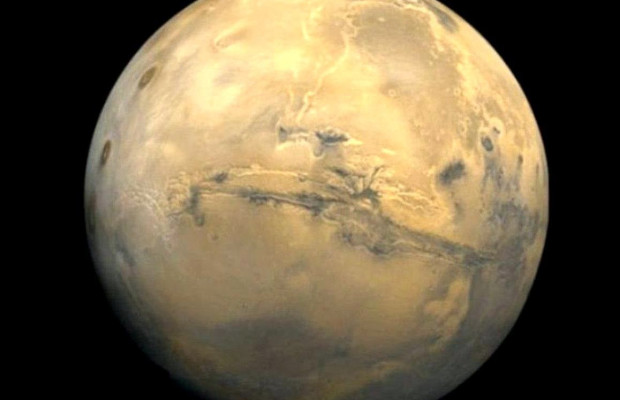Martian discoveries open fresh possibilities

By: Zuhayr Alam
In the earliest days of humanity, villages would always be established around water. There was no other choice. Water is unique. The special combination of hydrogen and oxygen are vital to all forms of life on earth. As far as we know there can be no life without water.
For years, NASA has used the same thought process when exploring Mars, and that is why for over 40 years, since the discovery of dry river beds on the surface of Mars in 1971, scientists have focused their resources on finding more hints of water on the red planet. They know that on our home planet, where there is water, there is life.
In the ’90s, NASA discovered a host of minerals, which indicated the presence of water in the past or in the present. The big breakthrough came in 2008, just seven years ago, when the Phoenix lander turned up portions of bright material that disappeared a few days later, leading scientists to suspect the presence of ice. The lander then went on to detect a sample of water vapor, confirming the presence of frozen water.
That was as far as NASA got until Sept. 28 of this year, when it confirmed the evidence that liquid water still flows on today’s Mars. Proof of this discovery comes in the summer months when liquid water runs down canyons and craters, leaving long dark stains on the surface before it dries up in the colder months.
Biology teacher Jeff Hartman said he thinks that NASA’s discovery is profound.
“It’s huge news. All life that we know of needs water, and without it, there could be no life,” Hartman said. “This shows that Mars could have had life, has life or could harbor life in the future.”
Earth science teacher Jason Steffen agreed with Hartman.
“The discovery is an important one,” Steffen said. “With water comes possibly for conditions that can support life. This could help us direct future Mars missions.”
Hartman also said he thinks that the discovery of any sort of life forms on Mars would be overwhelming.
“If any possible life on Mars had a different genetic structure than life on earth, that would be really cool. It would prove to us that life can have a variety of different genetic structures,” Hartman said. “If the life on Mars would have DNA, however, that would be earth-shattering. It would tell us that life on both Earth and Mars arose from a common ancestor and would bring up more questions than it would answer.”
Senior Andrew Nurse was astonished when he first heard of the discovery.
“At first, I thought everyone was playing a joke on me. Water on Mars? That’s so random,” Nurse said. “I later looked it up on Google, and, of course, there it was, showing me how stupid I was. It was truly mind-boggling.”
Now that it has had to sink in, however, Nurse has many questions.
“I’m super excited about this news. Water on a neighboring planet just opens up a world of possibilities for the aerospace industry,” Nurse said. Will we find extraterrestrials on Mars? Will Mars be habitable once we find no more use of this Earth to us? That’s something we may find out in the near future with our ever-so advancing technology.”
Despite all of the recent discoveries that NASA has made, its budget is still low compared to other federally funded organizations. In 2014, NASA’s budget was almost $18 billion. This may seem like a large amount, but it is only one half of one percent of the federal budget.
Steffen said he thinks that NASA deserves more.
“NASA’s budget is very inadequate. People see the immediate and smaller picture and not how these missions and technologies will positively impact the future of humanity.”









You must be logged in to post a comment Login